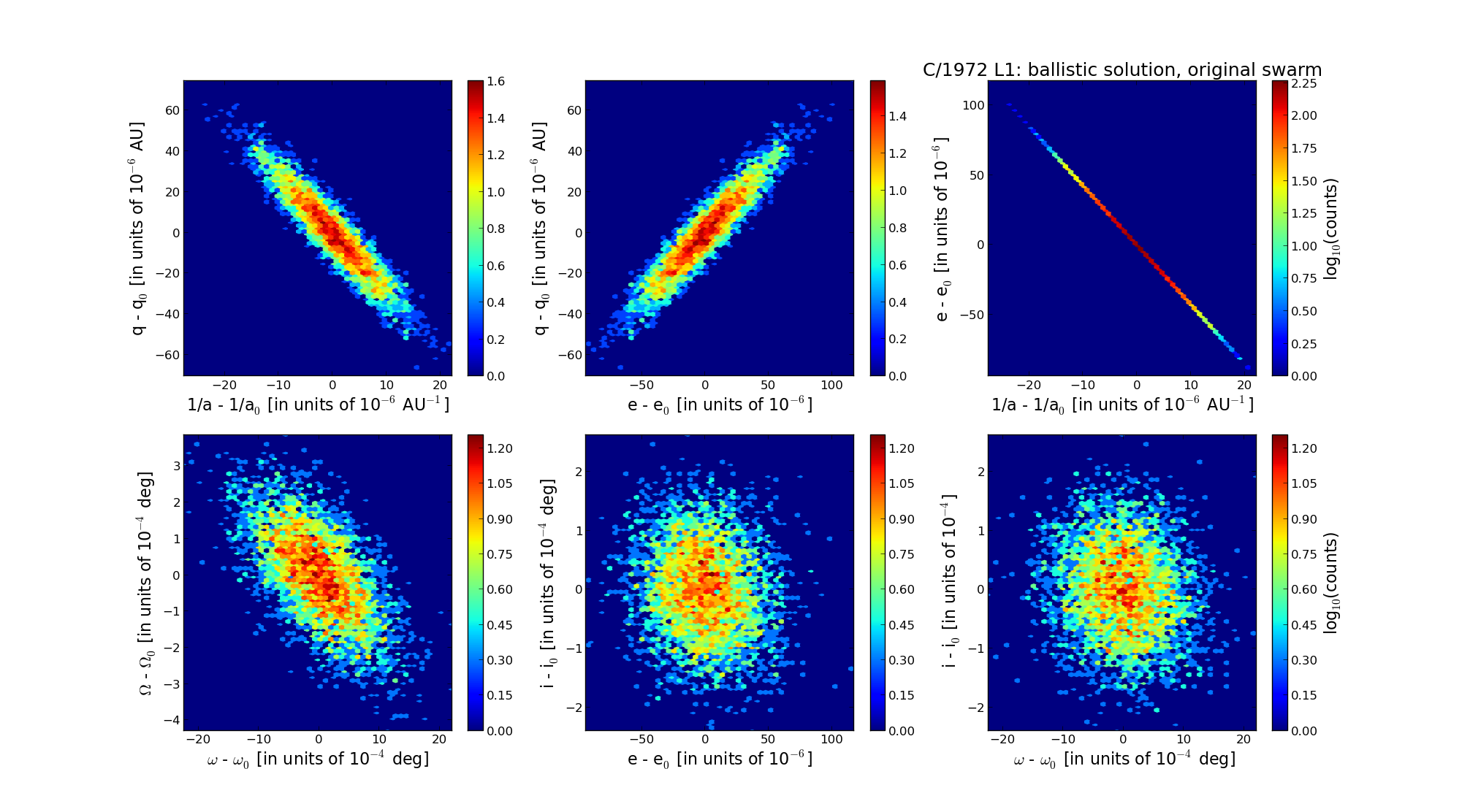| Solar System Dynamics & Planetology Group |
 |
C/1972 L1 Sandage |  |
| Solar System Dynamics & Planetology Group |
 |
C/1972 L1 Sandage |  |
| number of observations | 150 |
| number of residuals | 296 |
| data interval | 1972 June 9 — 1974 Oct. 19 |
| rms [arcsec] | 1.40 |
| orbit quality class | 1a |
| Epoch (TT) | 19721119.0 | = JD 2441640.5 |
| time of perihelion passage (TT) | 19721114.809745 | ± 0.003887 |
| perihelion distance | 4.27576201 | ± 0.00001790 |
| eccentricity | 1.00636268 | ± 0.00002624 |
| argument of perihelion [deg] | 56.657922 | ± 0.000583 |
| longitude of the ascending node [deg] | 225.485976 | ± 0.000118 |
| inclination [deg] | 79.367842 | ± 0.000073 |
| inverse semimajor axis [10-6 au-1] | -1488.08 | ± 6.13 |

| Epoch (TT) | 16680605 | |
| time of perihelion passage (TT) | 19721115.398710 | ± 0.003935 |
| perihelion distance | 4.26458890 | ± 0.00001844 |
| eccentricity | 0.99978206 | ± 0.00002648 |
| argument of perihelion [deg] | 56.882790 | ± 0.000579 |
| longitude of the ascending node [deg] | 225.480163 | ± 0.000117 |
| inclination [deg] | 79.487939 | ± 0.000073 |
| inverse semimajor axis [10-6 au-1] | 51.11 | ± 6.21 |
| Epoch (TT) | 22691122 | |
| time of perihelion passage (TT) | 19721113.990154 | ± 0.003911 |
| perihelion distance | 4.27440651 | ± 0.00001806 |
| eccentricity | 1.00265385 | ± 0.00002653 |
| argument of perihelion [deg] | 56.572391 | ± 0.000589 |
| longitude of the ascending node [deg] | 225.472679 | ± 0.000117 |
| inclination [deg] | 79.414662 | ± 0.000072 |
| inverse semimajor axis [10-6 au-1] | -620.87 | ± 6.20 |